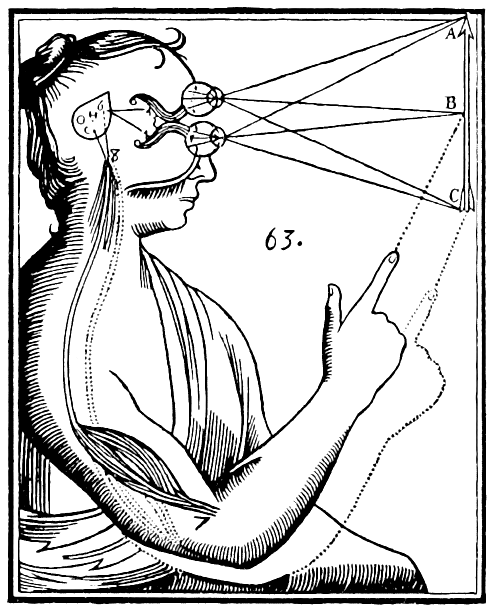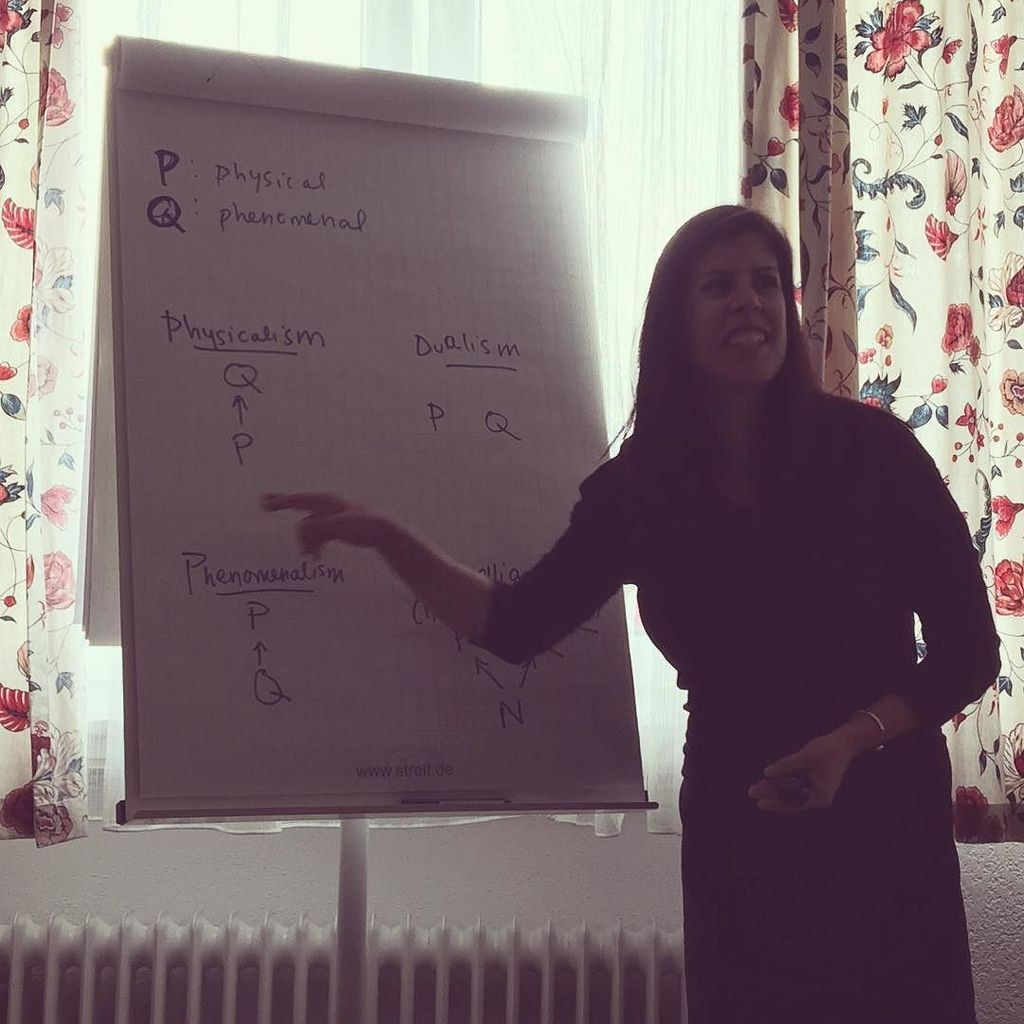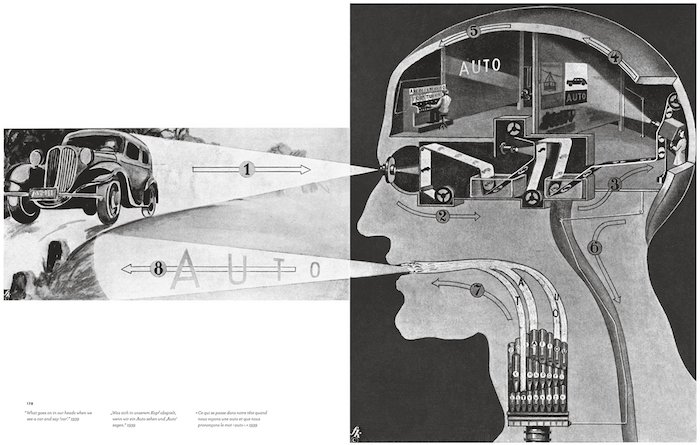8 Philosophy of mind
What is consciousness?
Lorem ipsum dolor sit amet, consectetur adipisicing elit, sed do eiusmod tempor incididunt ut labore et dolore magna aliqua. Ut enim ad minim veniam, quis nostrud exercitation ullamco laboris nisi ut aliquip ex ea commodo consequat. Duis aute irure dolor in reprehenderit in voluptate velit esse cillum dolore eu fugiat nulla pariatur. Excepteur sint occaecat cupidatat non proident, sunt in culpa qui officia deserunt mollit anim id est laborum.
8.1 Consciousness
8.1.1 Introduction
8.1.2 Perception
- Is perception veridical?
- Descartes
- Mark, J.T., Marion, B.B, & Hoffman, D.D. (2010). Natural selection and veridical perceptions. 5
- Gefter, A. & Hoffman, D.D. (2016). The case against reality. The Atlantic. 6
See also:
8.2 Dualism
8.2.1 Introduction
- Mind-body problem
- Plato
- Descartes
- Gödel
- Kripke

- Grego, R. (2022). Is Western thought marching towards Eastern Idealism?
8.2.2 Criticism
- Gilbert Ryle
- “the dogma of the Ghost in the Machine”
- The Concept of Mind (1949)
- Bunge
- Bunge, M. (2010). Mind and Matter: A Philosophical Inquiry. 7
7 Bunge (2010).
8.3 Physicalism
- Materialism
- Descartes and Elisabeth, Princess of Bohemia
- Tollefsen, D. (1999). Princess Elisabeth and the problem of mind-body interaction. 8
- Marx
- Montero 9
- Dennett
- Dennett, D.C. (2012). The mystery of David Chalmers. 10
- Churchland’s 11
- Nail
- Ney
- Sean Carroll on QFT and experimental high energy physics ruling out the role of any newphysics in the functioning of the brain.

See also:
8.4 Externalism
- Distributed cognition
- Carney, J. (2020). Thinking avant la lettre: A Review of 4E Cognition. 12
- John Vervaeke
12 Carney (2020).
8.5 Panpsychism
- Chalmers
- Rejection of dualism vs physicalism dichotomy
- Harris, A. (2022). The strong assumption.
See also:
8.6 Illusionism
- Ross, D. (2000). Dennett’s Philosophy: A comprehensive assessment. 13
- Frankish, K. (2016). Illusionism as a theory of consciousness. 14
- Dennett, D.C. (2016). Illusionism as the obvious default theory of consciousness. 15
- Dennett, D.C. (2023). How, when, and why can we trust our brains? Johns Hopkins Natural Philosophy Forum annual Distinguished Lecture.
8.7 Neuroscience
8.7.1 Theoretical neuroscience
- Connectionism
- Fodor, J.A. & Pylyshyn, Z.W. (1988). Connectionism and cognitive architecture: A critical analysis. 16
- Information integration
- Tononi, G. (2004). An information integration theory of consciousness. 17
- Tononi, G. (2010). Information integration: Its relevance to brain function and consciousness. 18
- Active inference
- Free energy principle (FEP)
- Friston, K. (2010). The free-energy principle: a unified brain theory? 19
- Andrews, M. (2021). The math is not the territory: Navigating the free energy principle. 20
- Predictive coding
8.7.2 Experimental neuroscience
- Lettvin, J.Y., Maturanat, H.R., McCulloch, W.S., & Pitts, W.H. (1959). What the frog’s eye tells the frog’s brain. 21
- TODO: Libet experiments
- Tononi, G. & Edelman, G.M. (1998). Consciousness and complexity. 22
- Koch, C., Massimini, M., Boly, M., & Tononi, G. (2016). Neural correlates of consciousness: Progress and problems. 23
- Cohen, M.A., Dennett, D.C., & Kanwisher, N. (2016). What is the bandwidth of perceptual experience?. 24
- MICrONS Consortium. (2025). Functional connectomics spanning multiple areas of mouse visual cortex. 25
8.7.3 Computational neuroscience
- Blue Brain Project
- Markram, H. et al. (2017). Blue Brain team discovers a multi-dimensional universe in brain networks.
- Reimann, M.W. et al. (2017). Cliques of neurons bound into cavities provide a missing link between structure and function. 26
- Markram, H. et al. (2020). New evidence for innate knowledge.
- Neuromorphic computing
26 Reimann, M.W. et al. (2017).

8.8 Language
8.8.1 Origin of language
- Origin of language
- Language of thought hypothesis
- Fodor, J.A. (1975). The Language of Thought. 27
- Sapir-Whorf hypothesis AKA Linguistic relativity
- Hurlburt, R.T. (2011). Not everyone conducts inner speech.
- Grzankowski, A. (2015). Not all attitudes are propositional. 28
- McCarthy, C. (2017). The Kekulé Problem. 29
- “the unconscious is a machine for operating an animal.”
- Wolpert, D.H. (2022). A sliver of reality.
See also:
8.8.2 Universal grammar
- Noam Chomsky
- innatism
- Syntactic Structures (1957)
- Kantian?
- Criticism
- Peter Norvig
- Norvig, P. (2011). On Chomsky and the Two Cultures of Statistical Learning. 30
- Liberman, M. (2011). Language Log (blog): Norvig channels Shannon contra Chomsky.
- Peter Norvig
30 Norvig (2011).
8.8.3 Animal cognition
- Davidson, D. (1982). Rational animals. 31
- Clever Hans
- Washoe the chimpanzee
- Pianalto, M. (2012). Thoughts, propositions, and animals.
- McKay, S. (2020). The marvel of language: Knowns, unknowns, and maybes. 32
8.9 Free will
- Reflections on Free Will - Daniel Dennett
- The Marionette’s Lament - Sam Harris
- Caricaturing free will - Pawel Pachniewski
- Dennett and Harris try to bridge the gap - Waking Up podcast
- Free will is dead, let’s bury it. - Sabine Hossenfelder
- Sam Harris: Free Will is an Illusion - Lex Fridman podcast
- Judea Pearl on the illusion of free will
- Aaronson, S. (2006). Lecture notes: Free will.
- Aaronson, S. (2013). The ghost in the quantum Turing machine. 33
33 Aaronson (2013).
8.10 Artificial intelligence and mind
8.10.1 Introduction
- Strong vs weak, general vs narrow AI
- Kurzweil, R. (2012). How to Create a Mind. 34
34 Kurzweil (2012).
Proposal (1955) for the Dartmouth Workshop:
The speeds and memory capacities of present computers may be insufficient to simulate many of the higher functions of the human brain, but the major obstacle is not lack of machine capacity, but our inability to write programs taking full advantage of what we have. 35
35 J. McCarthy, Minsky, Rochester, & Shannon (1955).
See also:
8.10.2 Symbolic vs connectionist AI
- TODO
See also:
8.10.3 Criticism
- Lucas-Penrose Argument about Gödel’s Theorem - IEP
- John Searle - Chinese room argument
- Hubert Dreyfus
- Dreyfus, H.L. (1965). Alchemy and artificial intelligence. 36
- Dreyfus, H.L. (1972). What Computers Can’t Do. 37
- Video: Being in the World: A tribute to Hubert Dreyfus.
- Video: Hubert Dreyfus interview - AI, Heidegger, meaning in the modern world.
- Hubert Dreyfus’s views on artificial intelligence
- Landgrebe & Smith
- Landgrebe, J. & Smith, B. (2023). Why Machines Will Never Rule the World: Artificial Intelligence Without Fear. 38
See also:
8.10.4 Counter criticism
8.10.5 Computer vision and mind
- Takagi, Y. & Nishimoto, S. (2022). High-resolution image reconstruction with latent diffusion models from human brain activity. 39
39 Takagi & Nishimoto (2022).
8.10.6 Language models and mind
- Browning, J. & LeCun, Y. (2022). AI and the limits of language. 40
- Piantadosi, S.T. (2023). Modern language models refute Chomsky’s approach to language. 41
- Katzir, R. (2023). Why large language models are poor theories of human linguistic cognition: A reply to Piantadosi. 42
Experimentallly:
Overall, these results suggest that, beyond the marginal effects of the models’ architectures, the middle—but not the outer—layers of deep language models systematically converge towards brain-like representations. 43
43 Caucheteux & King (2020).
See also:
8.11 My thoughts
Lorem ipsum dolor sit amet, consectetur adipisicing elit, sed do eiusmod tempor incididunt ut labore et dolore magna aliqua. Ut enim ad minim veniam, quis nostrud exercitation ullamco laboris nisi ut aliquip ex ea commodo consequat. Duis aute irure dolor in reprehenderit in voluptate velit esse cillum dolore eu fugiat nulla pariatur. Excepteur sint occaecat cupidatat non proident, sunt in culpa qui officia deserunt mollit anim id est laborum.
8.12 Annotated bibliography
8.12.1 Nagel, T. (1974). What is it like to be a bat?
- Nagel (1974)
8.12.1.1 My thoughts
- TODO
8.12.2 Dennett, D. (1991). Consciousness Explained.
- Dennett (1991)
8.12.2.1 My thoughts
- TODO
8.12.3 Chalmers, D. (1996). The Conscious Mind: In Search of a Fundamental Theory.
- Chalmers (1996)
8.12.3.1 My thoughts
- TODO
8.12.4 Kurzweil, R. (2012). How to Create a Mind.
- Kurzweil (2012)
8.12.4.1 My thoughts
- TODO
8.12.5 More articles to do
- TODO
8.13 Links and encyclopedia articles
8.13.1 SEP
- Agency
- Attention
- Behaviorism
- Computational Theory of Mind
- Consciousness and Intentionality
- Dualism
- Eliminative Materialism
- Elisabeth, Princess of Bohemia (1618-1680)
- Externalism About Mental Content
- Fichte, Johann Gottlieb (1762-1814)
- Frame Problem
- Functionalism
- Language of thought hypothesis
- Mental Causation
- Mental Representation
- Mind in Indian Buddhist Philosophy
- Multiple Realizability
- Physicalism
- Qualia: The Knowledge Argument
- Quantum Approaches to Consciousness
- Representational Theories of Consciousness
- Self-consciousness
8.13.2 IEP
- Animal Minds
- Behaviorism
- Consciousness
- Dualism
- Epiphenomenalism
- Functionalism
- Lucas-Penrose Argument about Gödel’s Theorem, The
- Identity Theory
- Immortality
- Intentionality
- Internalism and Externalism in the Philosophy of Mind and Language
- Knowledge Argument Against Physicalism
- Objects of Perception
- Qualia
- Relational Models Theory
- Sellars: Philosophy of Mind
- Solipsism and the Problem of Other Minds
- Stoic philosophy of mind
- Supervenience and Determination
- Supervenience and Mind
- Theory of Mind
8.13.3 Wikipedia
- AI-complete
- Artificial Intelligence
- Behaviorism
- Cartesian theater
- Charles Whitman
- Checker shadow illusion
- Consciousness
- Dreyfus’s views on artificial intelligence
- Eliminative materialism
- Extended Mind
- Free will
- Free will theorem
- Fichte, Johann Gottlieb (1762-1814)
- Functionalism
- Integrated information theory
- Internalism and externalism
- Knowledge argument
- Materialism
- Moravec’s paradox
- Multiple realizability
- Philosophy of mind
- Physicalism
- Reductionism
- Unsolved problems in neuroscience, List of
- Vertiginous question
- Zombie, Philosophical
8.13.4 Others
8.13.5 Videos
- Dennett, Daniel. (2019). Consciousness, Qualia and the “Hard Problem”.
- Dennett, Daniel. (2017). From Bacteria to Bach and Back: The Evolution of Minds.
- Seth, Anil. (2017). The Neuroscience of Consciousness.
- Seth, Anil. (2021). Is Reality a Controlled Hallucination?